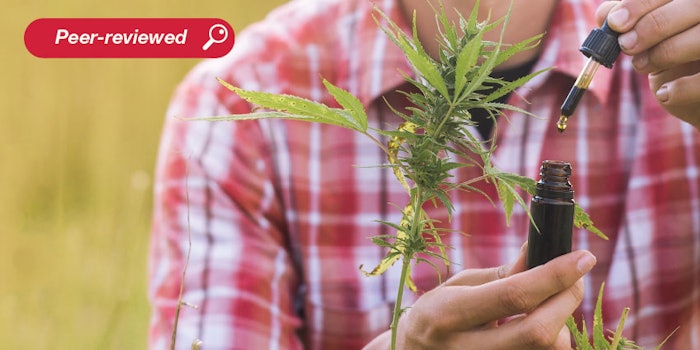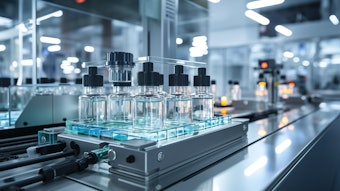
The skin is the largest organ of the body and has a complex and continually active structure that contributes to homeostasis and provides the first line of defense against injury and infection. In the past few years, it has become evident that the endocannabinoid system (ECS) plays a relevant role in the healthy or diseased state of this organ. Specifically, the dysregulation of the ECS has been associated with dermatological disorders such as atopic dermatitis, psoriasis, scleroderma and skin cancer.1 Therefore, the druggability of the ECS could open new research avenues for the treatment of these pathologies.
Numerous studies have reported that phytocannabinoids and their biological analogue cannabidiol (CBD) modulate a complex network of pharmacology involved in the modulation of the ECS, focusing on classical cannabinoid receptors, transient receptor potential channels (TRPs) and peroxisome proliferator-activated receptors (PPARs). The combined targeting of several endpoints seems critical to provide better chances of therapeutic success, in sharp contrast to the one-disease, one-target approach of many current drug discovery campaigns.
In relation, acne vulgaris is a dermatological disorder characterized by chronic inflammation. It affects almost 80% of adolescents and young adults and can persist well into adulthood, occasionally resulting in scarring and hyperpigmentation. Acne lesions develop in the sebaceous follicles (the pilosebaceous unit), which are found on the cheeks, forehead, chin and back of both affected and unaffected individuals.
The etiology of acne is not yet fully clarified but it is widely accepted that its pathogenesis is multifactorial, with major contributors including abnormal follicular differentiation and increased cornification; enhanced sebaceous gland activity, in part due to androgens, and hyperseborrhea; bacterial hypercolonization; and inflammation and immunological host reaction. The subsequent accumulation of sebum, enlargement of the follicle and build-up of keratinous material within the microcomedo cause the formation of comedones.
The conventional perspective holds that P. acnes, which is normally present on skin, colonizes the duct of the sebaceous follicle, causing an innate immune response and the progression from so-called noninflammatory comedones to inflammatory papules, pustules or nodules. However, recent research has shed light on the pro-inflammatory activity of the cutaneous microbiome and demonstrated inflammation at all stages of acne lesion development sub-clinically; even before comedo formation.2
The immunochemical pathways underlying the initiation and propagation of inflammation in acne are complex and still being elucidated, but may involve P. acnes as well as several inflammatory mediators and their target receptors, including cytokines, defensins, peptidases, sebum lipids and neuropeptides.
The present article therefore presents evidence to support the notion that acne is primarily an inflammatory disease, challenging the current nomenclature of noninflammatory versus inflammatory acne lesions. This has clinical implications in that anti-inflammatory actives used to treat the disease can be expected to exert effects against all lesion stages, albeit via distinct mechanisms.
In addition, explored here is the potential of CBD for acne prevention, as it demonstrates1 anti-inflammatory effects, as will be shown, and antipruritic, anti-aging and anti-malignancy properties by various mechanisms, including interacting with the endocannabinoid system. It also acts on testosterone, detailed later, which can lessen the severity of and prevent acne.3 Finally, due to specific requirements for the cannabis and hemp industry, described herein, it meets today’s consumer demand for natural, sustainably sourced personal care solutions.
Read the complete article in the C&T July/August 2023 digital edition.
References
- Del Rio, C. (2018, Nov). The endocannabinoid system of the skin. A potential approach for the treatment of skin disorders, NIH Pubmed. 157 122-133.
- Tanghetti, E.A. (2013). The role of inflammation in the pathology of acne. Available at https://www.ncbi.nlm.nih.gov/pmc/articles/PMC3780801/
- Balachandruda, B., Nirecitadevi, V. and Ranij, J.P. (2015). Hormonal pathogenesis of acne—simplified. Intl J Sci Stu. 183-185.











